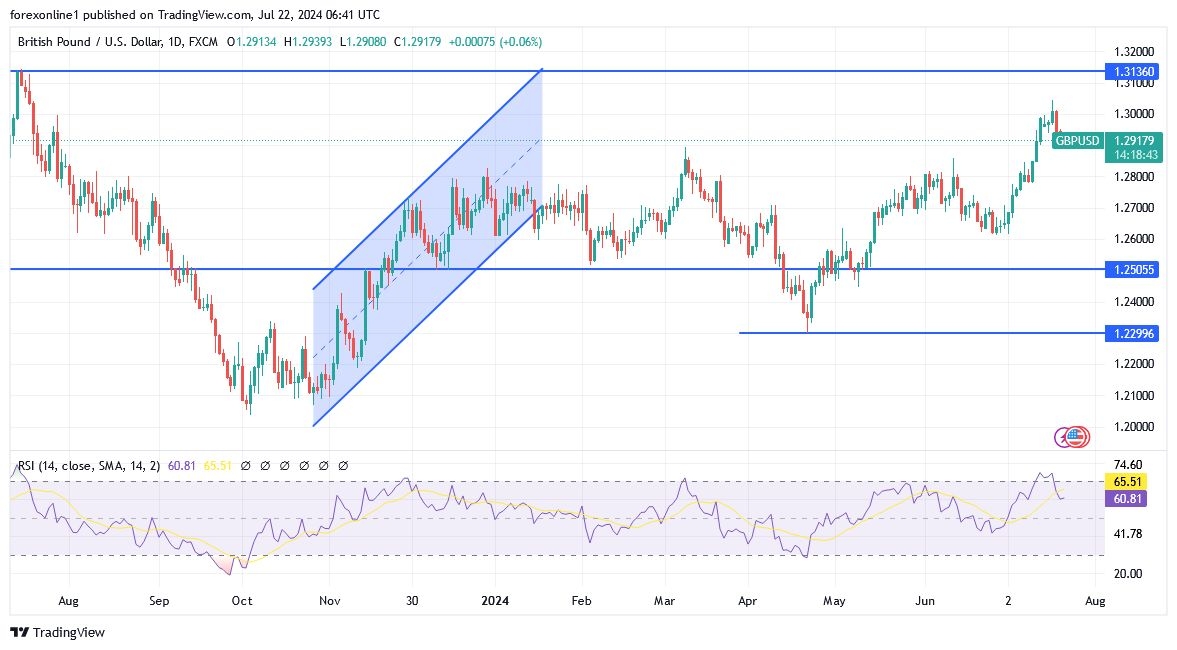- The pound continues to retreat from recent highs, supported along the way by UK retail sales data that showed a sharp decline in activity in June.
- According to reliable trading platforms, the pound fell below 1.19 against the euro and the pound against the US dollar GBP/USD approached 1.29 after the Office for National Statistics said that UK sales fell by 1.2% on a monthly basis in June, after growing by 2.9% in May.

This was below the consensus forecast of -0.4%. The year-on-year growth rate was -0.2%, down from 1.3% and below estimates that indicated a 0.2% growth. According to the economic calendar, the Office for National Statistics stated that retailers cited election uncertainty, poor weather, and low foot traffic as factors affecting sales. Phil Monckhouse, Country Manager at Ebury UK, noted, “It’s clear that the wet summer we’ve experienced so far has deterred shoppers.”
Top Forex Brokers
Maher Drag, Head of Research for the Americas at HSBC, added, “The pound weakens after weak retail sales data.” He explained, “The weak sales data follows labor market data that showed slowing wage growth. Together, these data points present a bearish outlook on the persistent and high services inflation, making the market pricing for the likely outcome of the Bank of England meeting in August finely balanced.”
Meanwhile, July should see an improvement in retail activity as the UK weather settles in, the election is in the rearview mirror and consumer confidence improves. Data released on Friday from GfK already shows that UK consumer confidence has picked up this month. Furthermore, the GfK composite consumer confidence index rose to -13 in July from -14 in June. GfK reported a seven-point rise in the headline purchasing index (a sub-component of its consumer confidence survey), saying this was “likely to be good news for retailers and could translate into improved footfall in the coming months”.
For sterling, the outlook now hinges on the Bank of England’s interest rate decision on August 1. Data this week confirmed no rate cut next month, with services inflation rising by 5.7% year-on-year in June. Such a strong reading suggests that broader inflation will start to pick up again in the coming months, especially as household energy bills are set to start rising again in the autumn.
If the BoE abandons raising rates and continues to urge caution, sterling could remain supported as it benefits from one of the highest interest rates in the G10. Last Thursday’s wages data was more mixed, with some economists saying there was enough of a slack in the labor market underway to allow the Bank to cut rates. The bank says that strong wage growth will keep inflation high, but if it believes that wages are falling, it may believe that it can cut interest rates without stimulating inflation. Also, it will be aware that keeping interest rates high for too long could damage the economy.
The August 1 decision is finely balanced, with many policymakers indicating they were close to voting for a rate hike at the June meeting. Unlikely, a rate cut is to significantly undermine the pound’s rally if accompanied by guidance warning that it is not on a predetermined path for further rate cuts. Ultimately, this could keep the pound supported until the end of the year.
Technical forecasts for the GPB/USD pair today:
As we mentioned before, the 1.3000 psychological resistance will remain the most important for bulls to control the direction of the GBP/USD pair, as it is the most prominent on the daily chart to confirm the strength of the uptrend. Now, bulls are trying to hold on to that as a continuation of the recent sell-off and a move to break the 1.2820 support threatens the recent bullish bounce path.
Ready to trade our daily Forex analysis? We’ve made this UK forex brokers list for you to check out.
